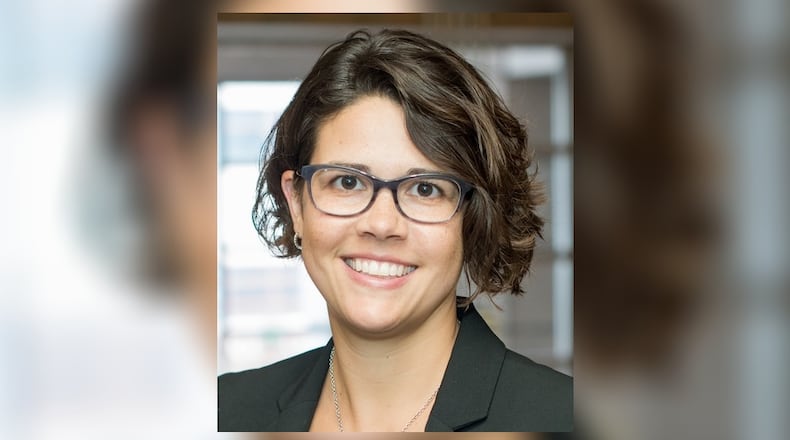“No one says, ‘Are you a woman?’” she said. “They say, ‘Are you good?’”
MORE: Ohio Medicaid overhauling how it pays for addiction, mental health care
Many hope that type of mentality soon spreads through the entire field. Women make up the smallest percentage of practitioners in orthopedic surgery than any other medical specialty, according to data from the Association of American Medical Colleges. It’s a field considered more physically demanding, which changes the perception of who will be such a surgeon.
Women are rare enough that when Dr. Jennifer Jerele meets patients, they usually assume she’s someone else.
“You say, ‘Hi,’ and they’re on the phone, and they say, ‘Hold on, the nurse is here,’” said Jerele, an orthopedic surgeon at Premier Orthopedics.
Less than 4 percent of orthopedic surgeons in Ohio are women, according to the AAMC. Orthopedic surgeons treat conditions of the musculoskeletal system, which include bones, joints and muscles, and surgeries can involve forcefully maneuvering joints into place and the use of equipment such as bone saws.
Women in the field say better awareness and more female role models could increase their numbers. Misconceptions that orthopedic surgery takes too much physical strength and that it doesn’t allow women to spend time with their families might stop more women from specializing in orthopedics, they said.
The biggest step is changing orthopedic surgery’s image, Jerele said.
“Every specialty of medicine has a stereotypical image of the typical person who goes into it,” she said. “For orthopedics, it’s usually the big jock guy.”
Orthopedics is one of the highest-paying medical specialties, with surgeons averaging $443,000 per year, according to Medscape’s 2016 physician compensation report.
MORE: Pharmacy middlemen made $223.7M from Ohio Medicaid
Women tend to be underrepresented in the highest-paying specialties and overrepresented in lower-paying fields such as primary care. On average, they make $105,000 less per year than their male peers, according to the report.
Women are aware of the benefits of orthopedics, Jerele said, but they weigh other factors. They consider how much time they want to spend with their families and how long they want their residencies to be.
“When you get into residency, it’s around the time you would usually start a family,” she said. “You kind of have to put things on hold. It’s not very family-friendly.”
She said people might assume the work takes brute strength, but technology such as robotics and arm slings make the work less strenuous.
In a 2016 survey of over 200 female orthopedic surgeons, about 70 percent cited lack of mentorship in medical school or earlier as a barrier to women entering the specialty.
Elizabeth Dulaney-Cripe, an orthopedic surgeon at Far Oaks Orthopedists, is the only female surgeon in her office, but she said a nearby surgeon has been a “fantastic” mentor to her.
She came into the field because she finds it rewarding to fix what’s broken. Her mother is a nurse, and she pushed Dulaney-Cripe to be a physician.
At medical school at the University of Cincinnati she was treated like “just another med student,” she said.
The physical nature of the work does challenge her. During a hip replacement on a larger patient, for example, she can’t just yank on the hip to remove it. She finds other ways to get the job done.
“You have to be smarter than (someone stronger),” she said.
MORE: Freestanding ERs on the rise in region
Jerele had her own role model – her father, who is also an orthopedic surgeon. He brought her into the operating room with him, but she initially thought the specialty wasn’t for her. She changed her mind in medical school.
The best advice Jerele received in medical school was to look for “female-friendly” residency programs. She said it’s also helpful to maintain a network of female colleagues to seek out advice.
Jerele has found that having a sense of humor has helped her succeed. Most of her male coworkers have been respectful, and perspectives of people outside the hospital pose the biggest challenges.
“All in all, you have to kind of not take it very seriously,” she said. “You have to roll with the comments … It’s a balance. You fit in the boys, but you also demand respect.”
Jerele has seen good efforts to increase the number of women practicing orthopedic surgery, but she still wants to see more.
“It’s a great job. I love what I do,” she said. “Hopefully we can get more ladies involved so I can have some more companionship.”
About the Author
